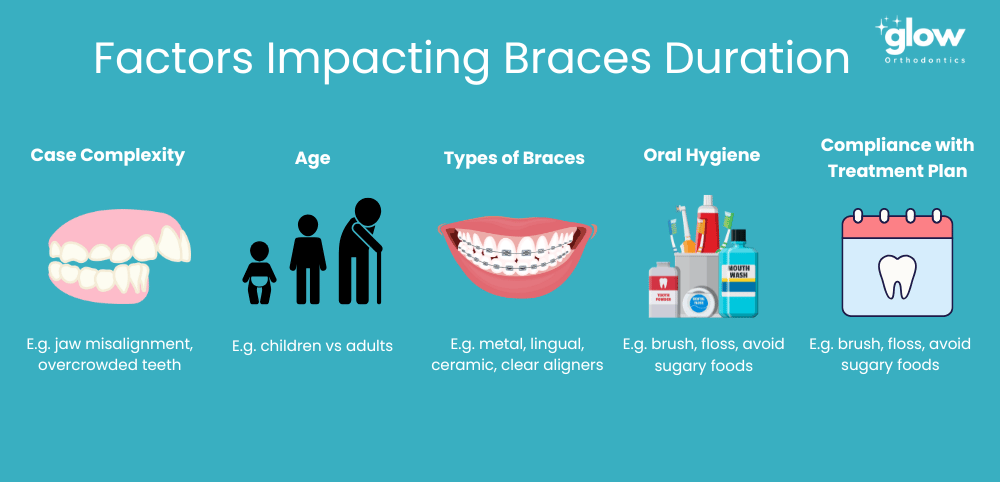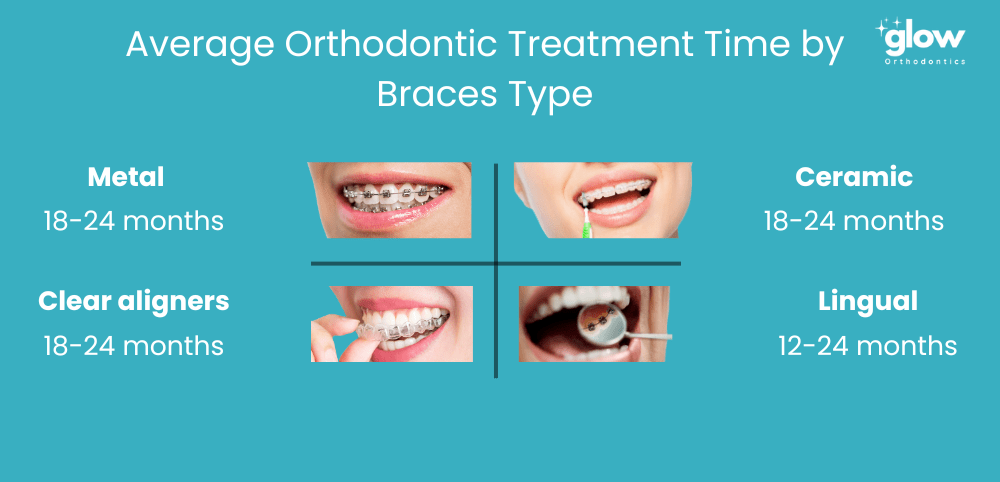How Long Do Braces Need to Stay On For?
Depending on the case, type of braces, and treatment plan – the length of time needed for braces to stay on for changes on a case by case basis.
Dr Jessica Yeo
1/22/20254 min read


Braces are still the gold-star treatment when it comes to effectively treating misaligned teeth, gaps, and bite problems.
Currently, 3 million Australians are reported to have some type of braces to achieve straight pearly, teeth – but each individual will have a different treatment experience, including the length of time their braces will need to stay on for.
There is no one size fits all when it comes to the duration of braces. As everyone’s teeth, alignment, and preferences are different, the answer to the question of “how long do braces need to stay on for” genuinely will vary from person to person. Alas, we know that this is not what you want to hear! So we’ve broken down the main considerations that will push out or shorten the treatment time for braces.
Factors that impact how long you need to wear braces
While we can give a ballpark time length needed for braces, it’s important to note that no two cases are the same.
Case complexity: If there are more complex issues like jaw alignment problems and overcrowded teeth, it can take up to 36 months to fully treat these issues. For simpler cases, the required duration could be up to 6 months of wearing braces.
Age: Generally, the duration needed for braces in children is shorter than adults because the teeth and jawbone are still developing, making them more subject to movement.
Type of braces: There are different types of braces including metal, lingual, ceramic, and clear aligners, and all are effective for straightening teeth. However, the different types of materials and process required for each will impact the duration of wearing braces.
Oral hygiene: Regularly brushing, flossing, and avoiding sticky and sugary foods can ensure teeth and gums are healthy, reducing the risk of decay and gum disease that can slow down treatment progress.
Compliance with the treatment plan: Attending regular appointments and complying with the treatment plan is essential for a successful more efficient orthodontic treatment.
Average orthodontic treatment time by type
Each type of braces has its own process and materials, which can affect the average orthodontic treatment time.
Traditional metal braces
The duration for traditional metal braces is typically 18 to 24 months. Traditional metal braces are an efficient option for teeth alignment - providing the best result in the shortest time possible.
Lingual braces
Lingual braces can take 12 to 24 months to straighten teeth. Lingual braces are worn on the inside of the teeth and are customised to fit each individual. Lingual braces are typically more expensive as they require a high level of customisation - each braces is custom-made to fit the individual tooth and the wire is custom bent to move the teeth. In saying this, lingual braces are popular among adults and teens as they are virtually invisible.
Clear/ceramic braces
Clear or ceramic braces treatment can take from 18 to 24 months to complete. Clear/ceramic braces are similar to traditional metal braces, they use ceramic tooth-coloured brackets and archwires for a more subtle aesthetic. When the orthodontist chooses to use a high-quality ceramic brace, the material can tolerate the same amount of pressure as the metal/traditional braces, making the treatment equally as efficient.
Clear aligners (Invisalign)
Clear aligners are a a removable plastic tray that is changed into a next tighter tray every 1-2 weeks to achieve straight teeth. When worn full time (recommended 22 hours/day), clear aligner treatment takes 18-24 months to treat comprehensive cases (same amount of time as braces). A less noticeable alternative to traditional braces, clear aligners apply pressure to the teeth to gradually move them in the right direction.


How to minimise orthodontic treatment time
Straightening teeth is not often a quick process, however, there are ways to minimise the overall orthodontic treatment time.
Follow the directions of your orthodontist
Orthodontists devise a treatment plan specific to the individual to achieve the best outcome in a shorter period of time. Following the orthodontist's directions can help quicken the length of time braces need to stay on for, reduce discomfort from braces, and make the treatment progress smoothly.
Maintain good oral health
Maintaining good oral health can help prevent any setbacks or complications that may increase the duration of braces. Brushing teeth twice a day, flossing teeth, and keeping up hydration can remove food particles and plaque that can accumulate around the braces and cause decay and staining. Similarly for clear aligners, brushing teeth before putting them on will avoid bacterial growth and prevent staining behind the aligners. The aim is to allow orthodontists to focus solely on the treatment without any setbacks from bad oral health.
Wear your rubber bands
Elastics or rubber bands are commonly part of the orthodontic treatment plan. These are used to correct overbite, overjet, or crossbites. Elastics help with the movements that braces and clear aligners create. It is important for those recommended to wear elastics to wear them according to the orthodontist's instructions - not only for the effectiveness of the treatment but also to decrease overall treatment time.
Wear your aligners
For an individual using clear aligners to straighten their teeth, it’s imperative to wear the aligners as directed by the orthodontist. Clear aligners are unique to the individual and are designed to place constant pressure on the teeth to move them in the desired position. If aligners aren’t worn consistently, the teeth will not move as much and delay treatment time.
Avoid risky foods
Hard, sticky, and sugary foods can damage or dislodge braces – causing delays in treatment. Avoiding these foods can prevent food getting caught in the braces and staining behind braces, making it easier to effectively clean teeth. Opting for soft foods can reduce the risk of damage to the braces and teeth.
Keep up with scheduled appointments
Your orthodontist will recommend regular appointments to closely monitor your progress and make adjustments to the braces or clear aligners. An individual's treatment can include periodic tightening to shift the teeth in the desired position with limited pain and discomfort. Regular appointments are every 6-8 weeks for braces and 8-12 weeks for clear aligners. Failing to attend regular appointments may affect treatment results and efficiency.
Orthodontic Treatment
Quick Navigation


Locations
